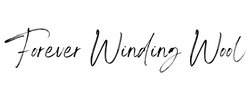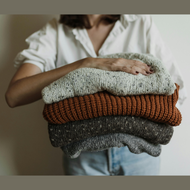Proper Tension and Gauge: How to Avoid Common Mistakes
Posted by Kelly Holtsclaw on Jul 8th 2025
Proper Tension and Gauge: How to Avoid Common Knitting and Crochet Mistakes
Have you ever finished a project—hours of careful knitting or crocheting—only to realize it’s too big, too small, or just doesn’t look right? One of the most common causes of this frustration is overlooking the importance of tension and gauge.
But don’t worry! In this guide, we’ll simplify the concepts of tension and gauge, share why they’re critical for project success, and provide actionable tips to help you avoid costly mistakes. Mastering gauge and tension will take your projects to the next level!
What Are Tension and Gauge?
- Tension: Tension refers to how tightly or loosely you work your stitches while knitting or crocheting. Consistent tension is key to maintaining smooth, even fabric in your finished project.
- Gauge: Gauge is the number of stitches and rows you create in a specific area (usually measured over 4 inches/10 cm). It determines the size, fit, and overall look of your project.
A Gotcha Alert: If your tension is too tight, your project may turn out stiff and smaller than expected. If it’s too loose, it may be floppy, oversized, or lack the defined look you’re aiming for. These two things enable you to work on your project to the same specifications as the pattern writer, thus producing the same finished project.
Why Does Gauge Matter in Knitting and Crochet?
Gauge isn’t just a technical term—it’s the key to creating projects that fit and look the way they’re intended to. Here’s why it matters:
- Proper Sizing: Gauge ensures your finished project matches the sizing in the pattern. This is especially important for garments like sweaters or hats.
- Yarn Usage: Incorrect gauge can lead to running out of yarn or having too much leftover.
- Texture and Fabric: Gauge influences the drape, stiffness, or stretch of your finished item. Getting it wrong can completely change the feel of your project.
Did you know? Patterns often specify the exact gauge you need to achieve (for example, 18 stitches x 24 rows on size US 7 needles). If you don’t match the gauge in the pattern, the final project dimensions could be very different!
How to Avoid the Tension and Gauge “Gotcha”
1. ALWAYS Swatch Before Starting Your Project
Knit or crochet a gauge swatch in the stitch pattern specified in the project. Here’s how:
- Use the recommended tools: Start with the needles or hook size suggested in the pattern.
- Block your swatch: To get an accurate representation, wash and block your swatch the same way you’ll treat the finished piece. Fibers like wool stretch post-blocking!
- Measure carefully: Count your stitches and rows over 4 inches/10 cm and compare them to the pattern’s required gauge.
? Tip: If you’re looking for precision tools to help you swatch, our knitting needles and crochet hooks are crafted to create even stitches with less effort.
2. Adjust Tools to Match Gauge
If your swatch doesn’t match the pattern’s gauge, don’t panic! Here’s what to do:
- Too many stitches per inch? Go up a needle or hook size. This will create slightly larger stitches.
- Too few stitches per inch? Go down a needle or hook size to make your stitches tighter and smaller.
- Repeat the swatching process until your gauge matches the pattern.
3. Be Consistent with Your Tension
During longer projects, you may notice that your tension can loosen up or tighten over time. To maintain consistent tension:
- Focus on relaxing your hands and shoulders while working.
- Take breaks to avoid tight stitches caused by fatigue or frustration.
- Use proper tools, such as smooth hooks or needles like Lantern Moon Ebony Double-Pointed Needles, to ensure your stitching doesn’t catch or drag on rough edges.
4. Know Your Yarn
Fiber type and weight can influence tension and gauge. For example:
- Superwash wools (like Malabrigo Rios) tend to relax after washing, so always measure gauge after blocking.
- Yarn with added elasticity, such as those with nylon blends, can adjust tension slightly.
5. Practice with Small Projects
If you’re still not confident about mastering tension, start small! Neckwarmers, scarves, or hats make excellent practice projects where precise sizing isn’t as crucial. Use a forgiving yarn, such as Malabrigo Worsted Yarn, to build your skills.
Key Takeaways for Clean, Consistent Projects
Mastering tension and gauge might seem overwhelming at first, but it’s worth the extra effort. Here’s a quick recap of our tips:
- Always swatch and block before starting.
- Adjust your needles or hooks to match the pattern’s gauge.
- Use high-quality tools and yarn to ensure consistency.
- Take your time and practice to make tension second nature.
By focusing on tension and gauge, your projects will fit better, look polished, and last longer.

